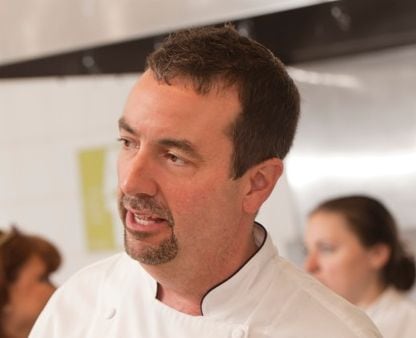Speaking to FoodNavigator-USA as part of our special edition on ‘super grains’, Chef Michael Holleman, director of culinary development at InHarvest (formerly Indian Harvest), said freekeh (pronounced free-ka) works well in everything from hot cereals to soups, salads, stuffing and curries, as it’s nutty and chewy.
Freekeh works well in meat-free dishes due to its meaty texture and intense umami flavor
However, the big opportunity is in veggie burgers, veggie meatballs, tacos and other savory dishes because it has a meaty density and mouthfeel and imparts a strong umami, earthy, mushroom-like flavor, he said.
So it’s intensely flavorful, has a toothier texture than farro but is softer than barley, and also packs a powerful nutritional punch, as it’s high in protein, fiber and resistant starch, as well as vitamins and minerals.
But equally importantly, freekeh comes with a great backstory, which is key to the success of many ‘ancient’ grains, added Holleman.
The romance of ancient grains is all part of their appeal
The details vary according to who tells the story, but legend has it that freekeh was discovered by accident 4,300 years ago when a nation in the Eastern Mediterranean was anticipating an attack.
Worried about losing their crops, the people picked the early green heads of wheat and stored them. However, during the attack, the wheat was set ablaze. But when they rubbed the wheat heads after the fire, they discovered that the grain inside tasted great, said Holleman.
“The romance of these ingredients is all part of their appeal,” he said.
Price of quinoa has risen so much that some firms have abandoned it
As for some other ‘ancient’ grains, quinoa remains very popular, he said, with white varieties offering a buttery, creamy flavour; red offering a nutty flavour and black offering an earthy, mineral-like flavour.
However, escalating demand has put pressure on prices to such an extent that some customers have “thrown in the towel”, he said.
“You see a lot more people using quinoa in blends now to keep prices down, or just using small amounts, but you can still make it cost effective. For example, I was at an elementary school this morning and we were doing chicken and cheese and quinoa quesadillas with salsa and they weren’t expensive as you don’t have to use a huge amount of quinoa.”
I’d say that any grains that are colored now are hot

He added: “We’ve also done work with quinoa in muffins, cookies and savory waffles and pancakes - the red and black varieties really stand out. In general, I’d say that any grains that are colored now are hot. From black barley to an ancient Italian black rice that I really like working with called Nerone.
“Nerone black rice is cultivated in the Po valley between Milan and Turin and has a rich and buttery flavour that works in sweet and savory dishes.”
Hitting the mainstream
While a few years ago, only smaller companies were formulating products with 'ancient grains', many of them are now hitting the mainstream of product development in schools, hospitals, colleges, the military, and packaged foods, he said.
This is in part because of growing demand for whole grains and gluten-free grains, he said. But it’s also a reflection of a desire for more storytelling in food marketing, he said.
“Customers want to know the story behind the grains, whether they are food manufacturers supplying packaged foods for retail, or chefs developing recipes for foodservice. This is the kind of detail you’re starting to see on menus now."
Whole grains, ancient grains and heirloom are three of the most important terms in food marketing right now
He added: “Whole grains, ancient grains and heirloom are three of the most important terms in food marketing right now.

“We work with a lot of food manufacturers developing retail products and they always say to us, don’t just think about what we sell now; come in and show us the gold standard foodservice applications for these grains.
“They are looking to foodservice for inspiration.”
To read more about super grains, click on the links below:
Make the most of ancient grains with blends: Bay State Milling
10 ancient grains to watch: from kamut to quinoa
Barley ‘always a bridesmaid, never a bride’: getting this super grain into the spotlight
